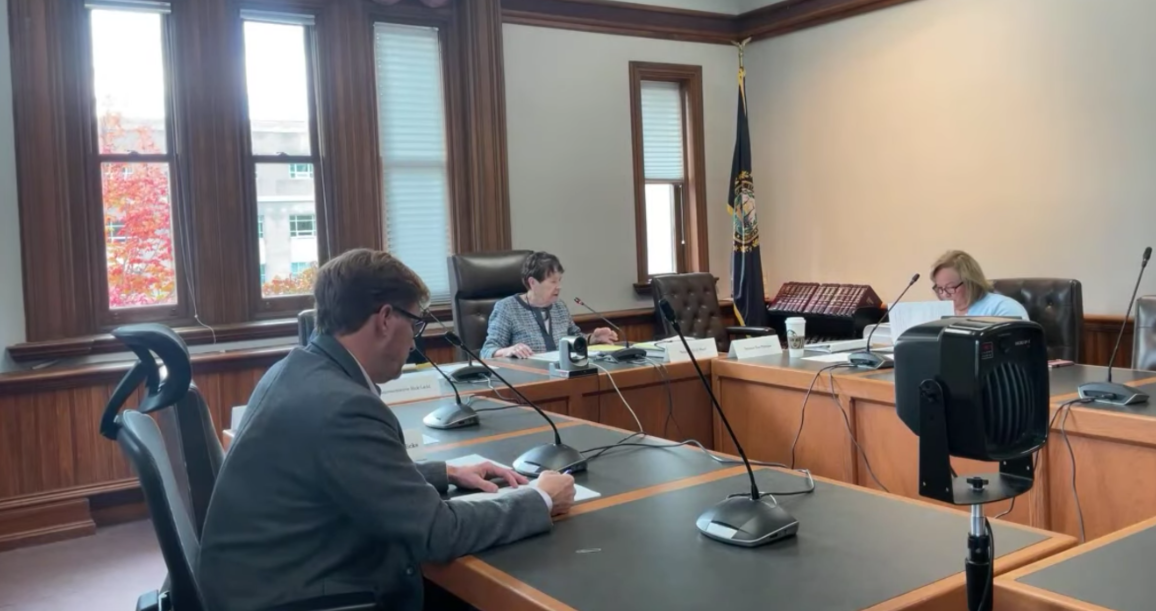By GARRY RAYNO, InDepthNH.org
CONCORD — The Education Freedom Account Oversight Committee worked on its first interim report although the program is entering its third year. The report was due more than a year ago.
The legislative oversight committee Wednesday went over areas of disagreement and also talked about recommendations for possible changes in the program in the future.
Questions were raised about the transition of public money from public schools to private, religious, home or alternative school programs as well future eligibility requirements for parents.
And several members were concerned the Department of Education was slow in releasing its report due in August on last year’s program and new students entering this year.
State Sen. Suzanne Prentiss, D-West Lebanon, thought the proposed report presented by committee chair state Sen. Ruth Ward, R-Stoddard, needed to be clear that public money was leaving public schools for private or home school programs.
“We need some language around the transition of the money,” Prentiss said. “It is public money and it is leaving public schools and going into this program whether it is for private or religious or home schools,” she said. “That is money the public school normally would have, but is going with the child to an alternative setting,”
But Rep. Rick Ladd, R-Haverhill, argued the average EFA grant is $5,200 for a student versus the cost of educating a child in a public school at $20,000 a year.
‘It is not about funding the system,” he said, “it is money going to best support a child’s educational needs.”
He said they were missing the most valuable part of the discussion of what is best for the child at that particular moment on their educational path.
“Money raised through taxes is not sacred money raised only for educating public school students,” Ladd said.
Prentiss said she did not say the education of the child was not important, but “we have a duty to look at where the money goes and how it gets there.”
She noted that the vast majority of the $20,000 per student cost Ladd talked about is from local property taxes and impacts the local property tax rate.
“To say this saves money, shifts the foundation further out,” Prentiss said, “and may cost more down the road but we don’t know that yet.”
Prentiss also proposed that parents’ eligibility be determined on an annual basis as it is with programs such as welfare or Medicaid and not once and never again.
She said she was not interested in small changes, but there ought to be a way to adjust the program when there are significant changes in a person’s income.
Ladd said he is for accountability but he would not like to see a child go in and out of the program repeatedly because of changes in a parent’s income.
“That does not make for a well-coordinated program,” he said.
Prentiss agreed saying maybe the duration should be middle school or high school, and added they should be able to find a way to manage the eligibility component without harming the child.
Prentiss was also concerned about conflict of interest for lawmakers who may financially benefit from the EFA program as the eligibility limits go up as is being proposed again this upcoming session.
She said she was not interested in legislators who have children in the EFA program, but those who are approved vendors who potentially benefit as the program changes.
They should have to file a conflict of interest with the Secretary of State’s office like others do for conflicts, she suggested.
The wife of House Majority Leader Jason Osborne, R-Auburn, has a learning center that participates in the program.
Committee member Rep. Matthew Hicks, D-Concord, said the conflict of interest requirement could apply to him because he runs a private school in Concord.
The committee also discussed information they want the Department of Education to provide at its next meeting including what a 100 percent graduation rate is for the program, and why more than 500 students left the program but information about why was not included in the DOE report on the program released about a week ago.
Members will submit recommendations for the interim report to be discussed again at the next meeting.
For the current school year, 4,211 students are in the program, up from 3,025 at the same point last year, and from 1,635 for the 2021-2022 school year.
The costs have grown from $8.1 million the first year, to $14.7 million the second year and $22.1 million this school year.
This year the financial threshold to participate in the program was raised from 300 percent of the federal poverty level to 350 percent.
That increases the threshold for the current school year from $59,160 for a family of two, to $69,020, and for a family of four from $90,000 to $105,000 annually.
The program was sold by Education Commissioner Frank Edelblut and others as an opportunity for lower-income parents to find the best educational fit for their children if they have problems within the public school system.
However the vast majority of the money spent through the expansive voucher program has gone to pay the religious and private school tuition of students in those schools prior to the EFA program’s creation.
Garry Rayno may be reached at garry.rayno@yahoo.com.






